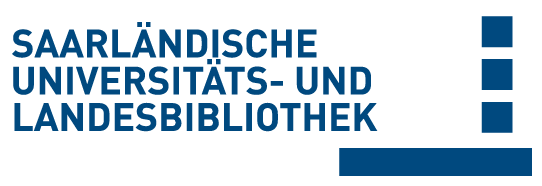Please use this identifier to cite or link to this item:
doi:10.22028/D291-33865 | Title: | Synkopenabklärung bei Kindern und Jugendlichen – Handeln wir gemäß der aktuellen Leitlinie? |
| Other Titles: | Syncope in children and adolescents: are the current guidelines being followed? |
| Author(s): | Landwehr, Katharina Meyer, Sascha Flotats-Bastardas, Marina Poryo, Martin |
| Language: | German |
| Title: | Wiener Medizinische Wochenschrift |
| Publisher/Platform: | Springer Nature |
| Year of Publication: | 2021 |
| Free key words: | Synkope Kinder und Jugendliche Basisdiagnostik Red flags Leitlinie Syncope Children and adolscents Basic diagnostic testing Red flags Guideline |
| DDC notations: | 610 Medicine and health |
| Publikation type: | Journal Article |
| Abstract: | Hintergrund
Synkopen im Kindes‑/Jugendalter sind häufig und meist gutartig. Mögliche kardiale Synkopen müssen durch sorgfältige Basisdiagnostik (Anamnese (I), körperliche Untersuchung (II), Elektrokardiografie (III)) und ggf. weiterführender Diagnostik ausgeschlossen werden.
Fragestellung
Wurde die Diagnostik bei Vorliegen einer Synkope entsprechend der gültigen S2k-Leitlinie durchgeführt?
Material und Methoden
Retrospektive Analyse (01/2015–12/2017), Kinderklinik des Universitätsklinikums des Saarlandes, Homburg, Deutschland. Eingeschlossen wurden alle Patienten von 1 bis 18 Jahre, die sich wegen Synkope vorstellten.
Ergebnisse
Es erlitten 262 Patienten eine Synkope (161 weiblich [61,5 %], 101 männlich [38,5 %], Alter 12,5 ± 3,9 Jahre); davon 183 (69,8 %) Reflexsynkopen, 36 (13,7 %) Präsynkopen, 35 (13,4 %) Synkopen unklarer Genese, 8 (3,1 %) kardiale Synkopen; 43/262 Patienten (16,4 %) erhielten eine vollständiger Basisdiagnostik (I–III) gemäß Leitlinie, 13/43 (30,2 %) wurden korrekt weiterführender Diagnostik zugeführt; 219/262 Patienten (83,6 %) erhielten keine ausreichende Basisdiagnostik (I–III), 135/219 (61,6 %) wurden unnötigen apparativen Untersuchungen zugeführt.
Diskussion
Die leitlinienkonforme Synkopenabklärung ist wichtig, um unnötige, aber auch nicht ausreichende Diagnostik zu vermeiden und somit Patienten mit Synkope korrekt zu diagnostizieren. Background Syncope in childhood and adolescence is frequent and in most cases benign. A thorough history taking, complete physical examination, electrocardiography and further diagnostic work-up as indicated should rule out possible cardiac syncope. Objective To evaluate whether the diagnosis of syncope was performed according to the currently valid S2k guideline. Material and methods Retrospective study (January 2015–December 2017), University Children’s Hospital of Saarland, Homburg, Germany. All patients aged 1–18 years presenting with the primary complaint of syncope were included. Results In this study 262 patients presented with a history of syncope (161 female (61.5%), 101 male (38.5%), median age 12.5 ± 3.9 years). Of these, 183 (69.8%) were reflex syncopes, 36 (13.7%) presyncopes, 35 (13.4%) undefined and 8 (3.1%) cardiac syncope. Out of 262 patients, 43 (16.4%) were diagnosed in accordance with the published guidelines and 13/43 (30.2%) correctly received further diagnostic work-up. In 219/262 patients (83.6%) basic diagnostic testing was not sufficient and 135/219 (61.6%) were submitted to further unnecessary diagnostic tests. Conclusion Better adherence to the syncope guidelines bears the potential to avoid unnecessary and costly auxiliary medical tests while correctly diagnosing patients with syncope. |
| DOI of the first publication: | 10.1007/s10354-020-00798-3 |
| Link to this record: | urn:nbn:de:bsz:291--ds-338653 hdl:20.500.11880/31174 http://dx.doi.org/10.22028/D291-33865 |
| ISSN: | 1563-258X 0043-5341 |
| Date of registration: | 19-Apr-2021 |
| Faculty: | M - Medizinische Fakultät |
| Department: | M - Pädiatrie |
| Professorship: | M - Prof. Dr. Michael Zemlin |
| Collections: | SciDok - Der Wissenschaftsserver der Universität des Saarlandes |
Files for this record:
| File | Description | Size | Format | |
|---|---|---|---|---|
| Landwehr2021_Article_SynkopenabklärungBeiKindernUnd.pdf | 485,99 kB | Adobe PDF | View/Open |
This item is licensed under a Creative Commons License


